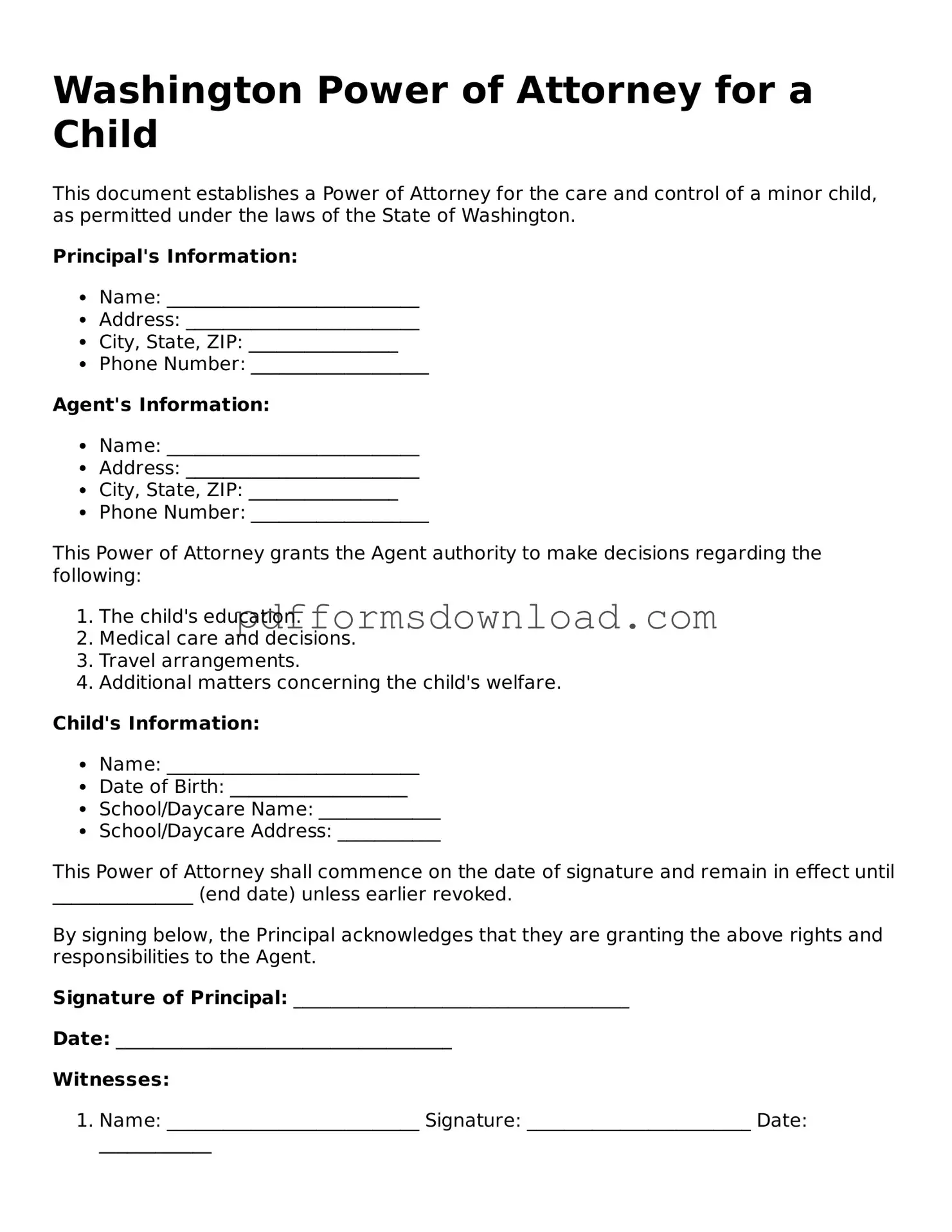What is a Washington Power of Attorney for a Child?
The Washington Power of Attorney for a Child is a legal document that allows a parent or guardian to designate another adult to make decisions on behalf of their child. This may include decisions related to education, healthcare, and general welfare. It is often used when parents are unavailable due to travel, work commitments, or other circumstances.
Who can be designated as an attorney-in-fact for my child?
Any competent adult can be designated as an attorney-in-fact for your child. This could be a relative, family friend, or trusted neighbor. It is essential to choose someone who understands your values and can act in the best interest of your child.
How long does the Power of Attorney for a Child remain in effect?
The Power of Attorney for a Child can remain in effect for a specific period or until revoked. You can specify the duration in the document. If no duration is mentioned, it generally remains valid until the child reaches the age of 18 or until you revoke it.
Do I need to have the Power of Attorney notarized?
Yes, the Power of Attorney for a Child must be signed in the presence of a notary public to be legally valid. Notarization helps verify the identities of the parties involved and ensures that the document has been executed properly.
Can I revoke the Power of Attorney for my child?
Yes, you can revoke the Power of Attorney at any time. To do so, you should provide a written notice of revocation to the attorney-in-fact and any relevant parties. It is advisable to also notify any institutions or organizations that may have a copy of the original document.
What decisions can the attorney-in-fact make on behalf of my child?
The attorney-in-fact can make a variety of decisions, including but not limited to educational choices, medical care, and general welfare. However, it is crucial to clearly outline the scope of authority in the document to avoid any misunderstandings.
Is there a specific form I need to use for the Power of Attorney for a Child?
While there is no official state form, it is advisable to use a standard template that complies with Washington state laws. Many legal resources provide templates that you can customize to fit your specific needs.
What happens if I do not have a Power of Attorney for my child?
If you do not have a Power of Attorney in place and an emergency arises, it may be challenging for another adult to make decisions on behalf of your child. In such cases, authorities may need to involve the court to determine who can act in the child's best interest.
Can I include specific instructions in the Power of Attorney?
Yes, you can include specific instructions or limitations in the Power of Attorney document. Clearly stating your wishes can help guide the attorney-in-fact in making decisions that align with your values and preferences.
Is legal advice necessary when creating a Power of Attorney for a Child?
While it is not legally required, seeking legal advice is recommended. An attorney can help ensure that the document meets all legal requirements and accurately reflects your wishes. This can provide peace of mind and help prevent potential issues in the future.
